Campfire Atlas – Absolute Impact
First look into Campfire Atlas, the current flagship from Campfire’s current lineup. It relies on a 10mm full range dynamic driver, and it is assembled and designed in Portland, Oregon, USA. With a lot of competitors, it is time we put Campfire’s fine work to the test.
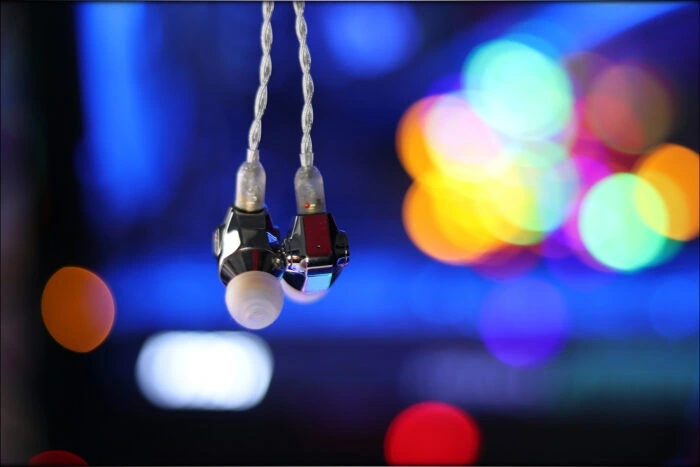
Introduction
Campfire is a rather well-known company among audiophiles, and for a good reason, being one of the “innovators”, who design a whole range of new IEMs, and who do so in USA. This also means that you can rely on Campfire for great customer support and warranty service, and they will be quite open to answer inquiries, and provide adequate support for your flagship purchase. Campfire is known to offer both flagships, but also affordable earphones, including the little brother of the ATLAS I am reviewing today, which is named Campfire Comet.
It should be noted that I have absolutely no affiliation with Campfire, I am not receiving any incentive for this review or to sweeten things out. This review is not sponsored nor has been paid for by Campfire or anyone else. I’d like to thank Campfire for providing the sample for this review. The sample was provided along with Campfire’s request for an honest and unbiased review. This review reflects my personal experience with Campfire Atlas. Every opinion expressed is mine and I stand by it, the purpose of this review is to help those interested in Campfire Atlas find their next music companion.
Product Link
You can get Campfire Atlas from www.amazon.com here: https://www.amazon.com/Campfire-Audio-Earphone-CAM-5225-products%E3%80%91%E3%80%90Ships/dp/B07DNHLHSZ/
Packaging
First things first, let’s get the packaging out of the way:
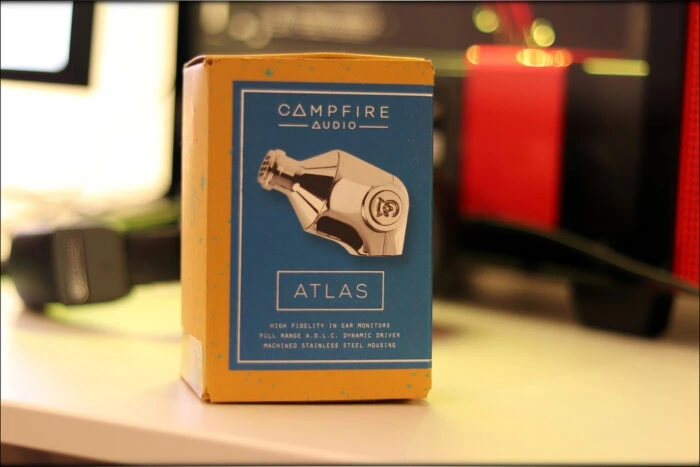
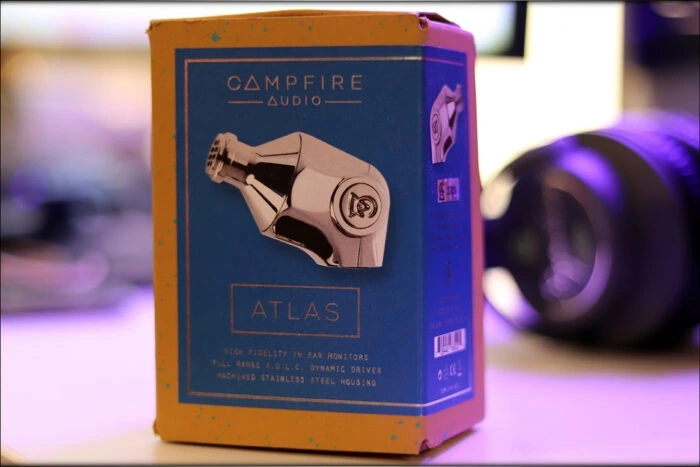

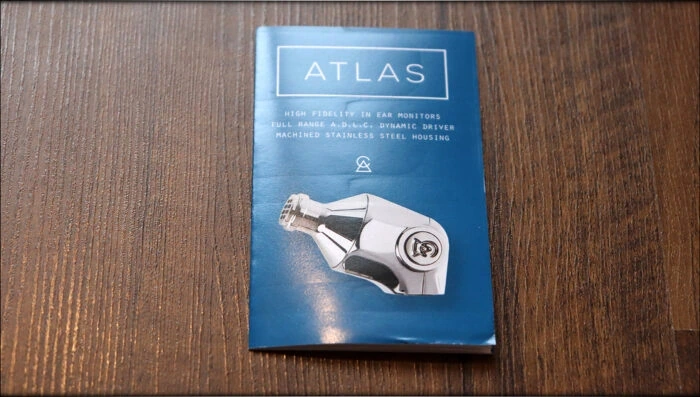
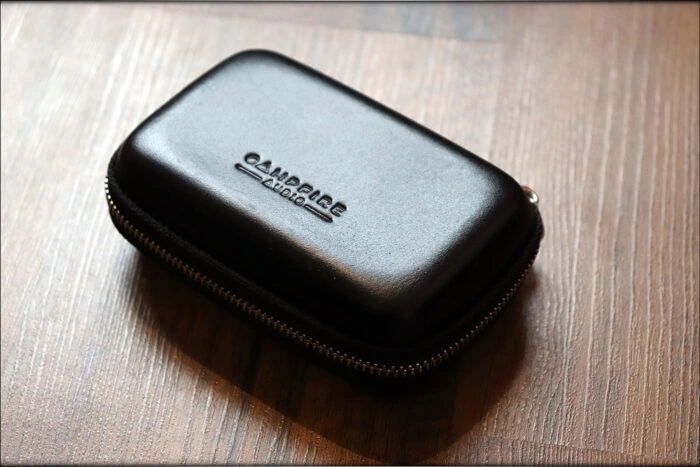
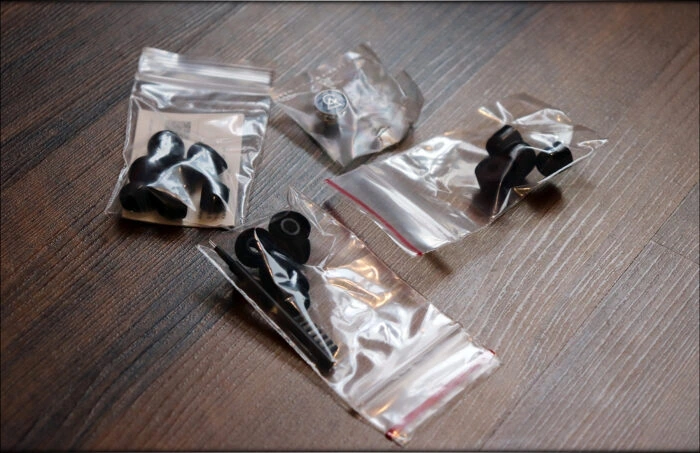
When it comes to Campfire Atlas, things are quite interesting, as for a flagship, they have a really small and cute-looking package. Indeed, this time around, we see a truly expensive flagship packaged in a small cardboard box, which is finely crafted and hides the actually transport case inside.
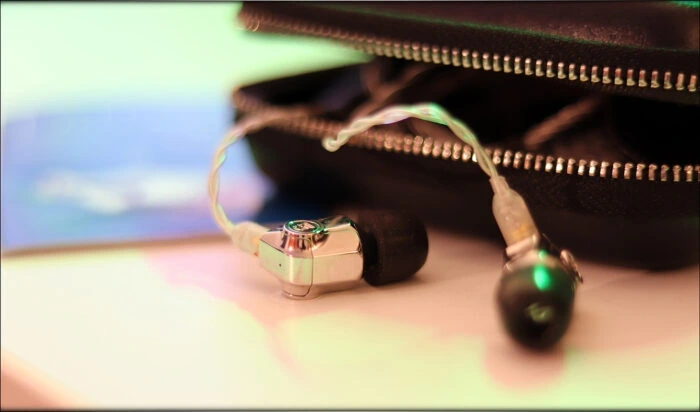
From the moment one touches and opens the actual transport case, it is easy to tell that Campfire is not joking around. The transport case feels like one of those extremely expensive bags you see models carrying around, with a really solid build, high-quality leather all around, and with the inside padded with a thick wool-like material. In fact, the transport case feels so awesome, that it is no shock that Atlas comes with each earpiece in its own protective soft material bag, to protect it from scratches, and considering that the cable they come with is a full silver cable, and that they also come with Final tips, and Comply tips, this has to be a package worthy of a flagship.
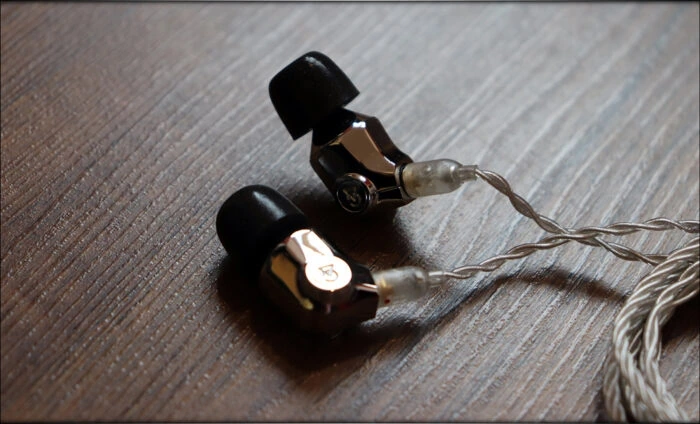
In fact, this is actually one of the best packages I had the honor of unboxing lately, and everything feels truly high-end, making me smile as I go through each of those little details, that Campfire paid a lot of attention to. The transport case will be useful for future usage, the tip collection is great and provides a versatile and high-quality tip selection, and the cable, and the IEMs themselves look really well packaged, the package quality truly reaching my personal golden standard.
Technical Specifications
5Hz–20 kHz Frequency Response
105 dB SPL/mW Sensitivity
19 Ohms @ 1kHz Impedance
Less than 1% Total Harmonic Distortion
Build Quality/Aesthetics/Fit/Comfort
Starting with the build quality, Atlas is simply outstanding. It is a one-piece full stainless steel IEM, made to be rounded all-around, but still with a beautiful design, and they have a mirror finish that looks quite stunning every time you see it. The connectors are MMCX, which seems to not be everyone’s favourite, but Campfire stated that they used a high-grade MMCX, with beryllium, and from what I can tell, I can confirm that those do not feel like they are the same MMCX as those found on entry-level IEMS, clicking in place better, and feeling more reliable. While, on one hand, having MMCX is not the best solution, it does open the world to aftermarket cables, if you’d want to get one.
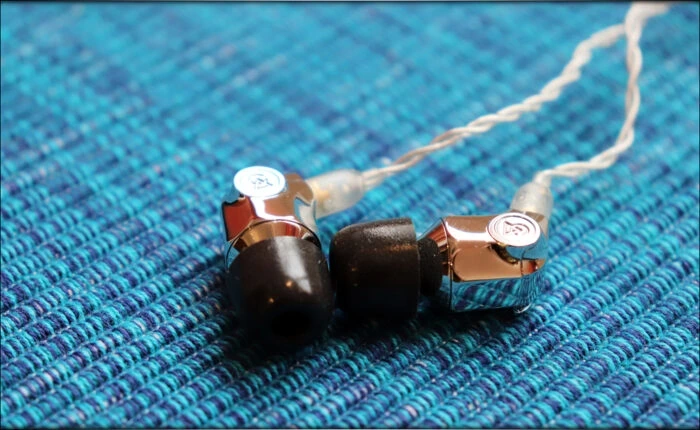
The cable is also quite stunning, a high-end Silver cable, which is both flexible and looks nice. It makes the thick, braided cables of more entry-level IEMs feel too thick and unoptimized, when you look at how thin yet trustworthy the cable of Atlas feels like. In all fairness, the only downside one could ever find to the cable is that it isn’t balanced, but this seems to be a more controversial subject, and there are plenty of high-end Single Ended sources available, not to mention that Atlas is rather easy to drive, and has a low impedance, so it doesn’t really require a Balanced source, actually being slightly prone to hiss, thing which is more present with some, if not most, balanced sources.
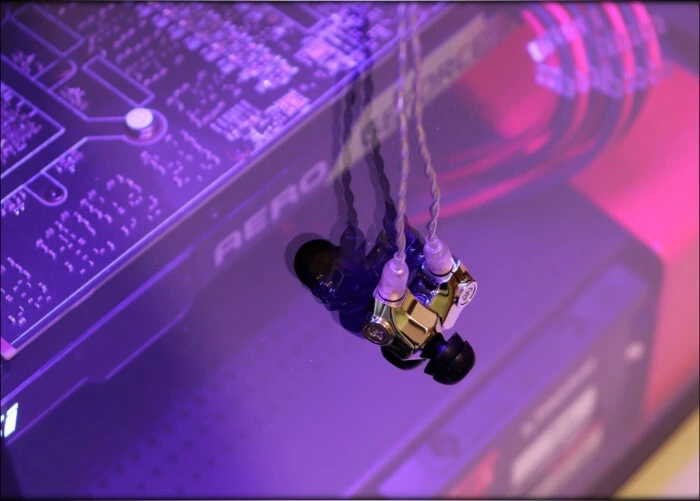
The aesthetics are pretty much universally accepted as great. This is one of those IEMs, that everyone, regardless of their tastes, will like. The CA logo on the sides of the IEM is finely crafted in, and doesn’t stand out, the MMCX connectors are placed exactly where they should be, and the vent port at the back is placed in such a way that you’re very unlikely to mistakenly cover it while inserting Atlas in your ears.
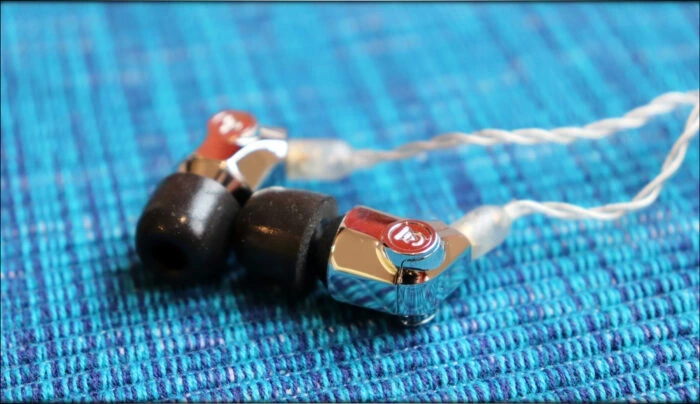
The fit and comfort are quite a different story though. I’m saying this because, Atlas is one of those few IEMs that I need to mention, when talking about driver Flex. This is a phenomenon where, you have to insert the IEM very slowly and carefully, and do the same when taking it out, because the driver flexes upon insertion, resulting in a “pop” sound. This will not affect the life of the driver or of the IEM, information confirmed both be Campfire, and other companies who design dynamic drivers, but it can be a bit bothersome. It seems that using any foam tips will eliminate the driver flex, but as always, foam tips do deteriorate over time, and they also cut some of the treble and even upper midrange impact.
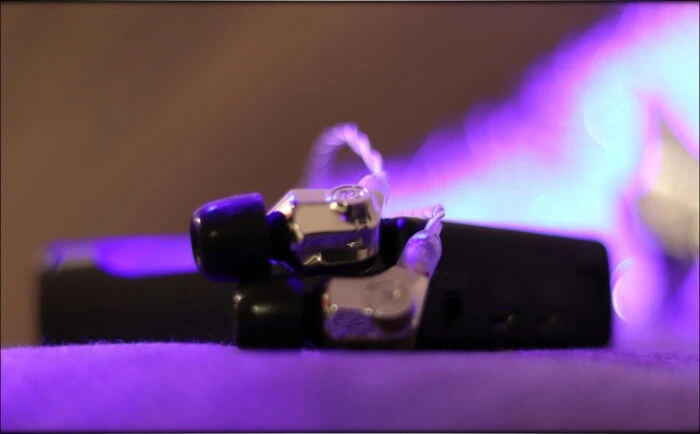
I found great comfort both while wearing Atlas straight-down and over-the-ear, but they may work better for being worn straight-down for most people. The cables are not one bit microphonic, which is great, and the cables are fairly flexible and well-designed, so they don’t hinder usage in any way.
Atlas is a flagship, and I don’t really expect people to wear them while jogging, but they can also be used that way without an issue, as long as you’re wearing foam tips.
The stainless steel body can get a tad cold, especially in the colder season, but this shouldn’t prove to be an issue for usage in any way, and it gives a satisfying feeling to the entire IEM, knowing they are made of metal.
The IEM shell itself is a bit large, but its very rounded shape will work with almost any ear, and the design has a rather long bore, without any hard edges or factors that could create discomfort. The IEM size itself may not work with the smallest of ears, but I expect most people to find excellent comfort with the IEM shell size, although, on a note, Campfire Comet, the little brother, which seems to have some design elements from ATLAS, is smaller in size. Overall, Atlas reaches my personal golden standard for comfort, aesthetics and fit, they are innovative, they can be worn both straight-down and over-the-ear, they do not have microphonic cables, and they are designed to have a comfortable shell.
Sound Quality
This time, the title of the review may not give it away quite that clearly, but Campfire ATLAS is one of the most impactful IEMs you can meet. In fact, the bass depth, impact and quantity is one of the best I had a chance to hear, and if you’re a basshead, those will absolutely reach your soul. The midrange is not mudded by the bass, and the entire sound is rather clear, with a sparkly treble, so the overall signature can be described as a warm, thick, clear, very resolute, impactful, deep, well extended both ways, and dynamic.
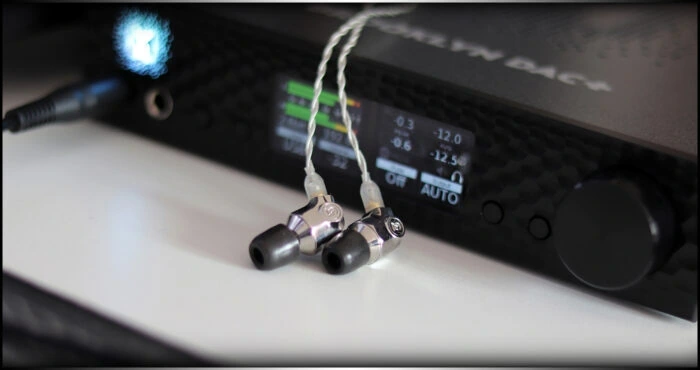
To start with the bass, it is one of the deepest, largest, most impactful bass styles you will hear in an IEM. The depth the bass can reach is undeniably deep, the speed of the bass is natural, with a smoother texture, but with enough speed to keep up with post-hardcore, death metal, or trance, but without being faster than a natural bass would be. This is clearly a Dynamic-Driver type of bass, and not the more dry and quick bass BA drivers tend to have. The authority of the bass is quite incredible, and the amount of bass may feel a bit much before getting used to the epic and huge sound, but after a few minutes, you may begin wondering where was this style of sound all your life. Rich is a really good word to describe the bass when you put it in perspective. The bass drops in amount after 125Hz, resulting in a slightly recessed upper bass / lower midrange.
The midrange is slightly recessed compared to the strong and heavy bass, and compared to the sparkly upper midrange / lower treble, so instruments relying on the lower midrange, or very deep male voices can feel slightly pushed back, but they are too slightly pushed back to cause any kind of dissatisfaction. It is important to note that this upper bass / lower midrange recession helps keep the bass in check and it also keeps the overall signature from becoming too thick and warm. It surely shows that Atlas was designed for a high-end market, being able to deliver deep impact, and strong kicks, without becoming wooly or too loose in the process.
In fact, the midrange can hardly be described as pushed back, it would rather be at normal levels, compared to a strong and explosive bass, and a sparkly treble. I can wholeheartedly recommend ATLAS for anything including guitars, they sound really organic and resolute, revealing and painting textures in guitar solos, that you never knew were there. Female vocals feel enthusiastic, emotional and dynamic, opera songs bear strong emotion, and screams in the higher registers in either post hardcore, or metal, or even in pop, feel emotional and can bring a tear to your eyes.
The same can be said if listening to a deeper song, like those of Jill Tracy, where Atlas is able to give a strong emotion to the entire song, especially with the large bass, creating a true atmosphere for the listener. Overall, the midrange can also be described as rich and organic, with a natural overall speed and excellent clarity, I’m actually quite impressed by how much detail they are able to reveal without becoming too overbearing. Interesting enough, the midrange doesn’t feel analytic and fatiguing, but rather organic, rich and musical, the raw amount of details is presented naturally and not forced onto the listener.
Atlas has a 2-4kHz elevation, with this elevation peaking into the 5-7kHz area, resulting in a really good sense of detail, and since this is where the odd harmonics of guitar notes are, resulting in some of the juiciest guitar solos out there, listening to some Slash, Architects, Polyphia or John5 being an absolute treat, like it would be to eat an entire cake in one sitting.
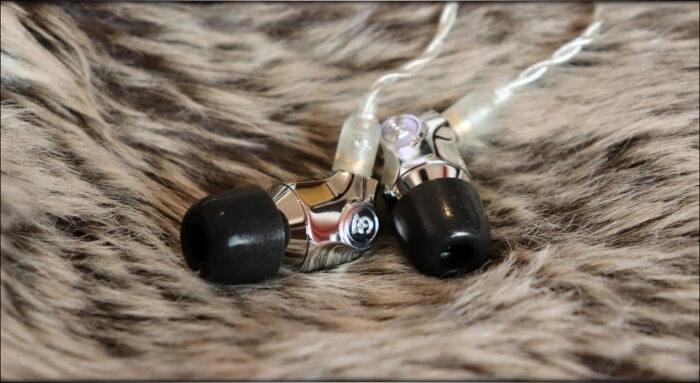
The treble is quite interesting, as it is actually well expressed, and it balances the warm bass, and the midrange, creating a true sparkle for music to shine with. The treble of Atlas can be described as full-bodied, and since the upper treble peak is around 8-9kHz, it tends to be quite pleasing, and it doesn’t lose quite that much energy above 9kHz, leading nicely into 11kHz with some air and high-end extension. This being said, Cymbal crashes tend to sound fairly textury, and with a good amount of energy, electronic music having just the right amount of sparkle to be fun and engaging, while rock and metal gets enough impact to be fun and energetic.
Overall, I can say with confidence that Atlas will sound good with most music styles, having its own way of delivering an impressive and dynamic sound, sounding epic, organic, and having a deep yet well extended tuning.
Portable Usage
The portable usage is fairly good.
I named this entire area Portable Usage, because it takes into account multiple aspects of using a IEM portably, like how easy it is to drive, how much it requires a strong AMP to sound good, and how likely you are to use it on-the-go. This is because a IEM (In-Ear Monitor) is mainly made to be used portably, and not inside your home.
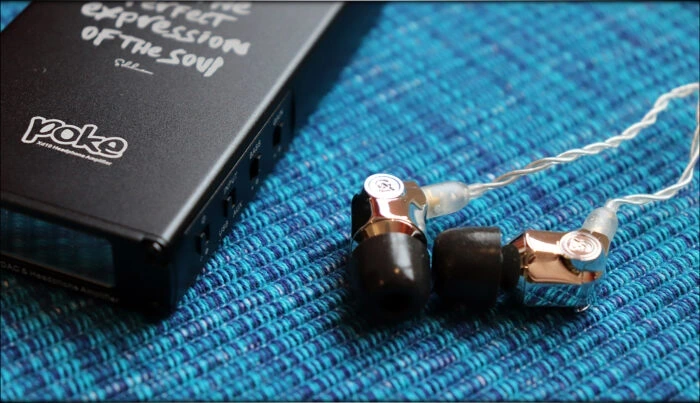
Back to the portable usage, Atlas tends to stack fairly well. Besides the fact that it scales quite well, so a really good source will pull much better sound from them, they are fairly easy to drive, a portable source like a NextDrive SpectraX doing the job incredibly well, as well as an iFi xDSD, or a Player like iBasso DX200, or a Hiby R6.
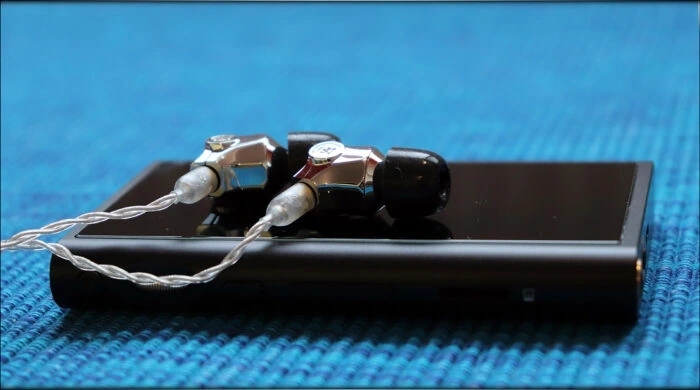
On the other hand, those are some pretty expensive IEMs, and you are not very likely to take them out for jogging, and taking into account the fact that you need to use foam tips to avoid driver flex, they are fairly good instead of excellent for portable usage.
Other things to take into account, are that they do not present cable microphonics, and they do have detachable cables, so using them on-the-go is not an issue, and the fact that they do not need much juice to sound very good, so you can use something as minimalistic as a FiiO BTR3 to drive them.
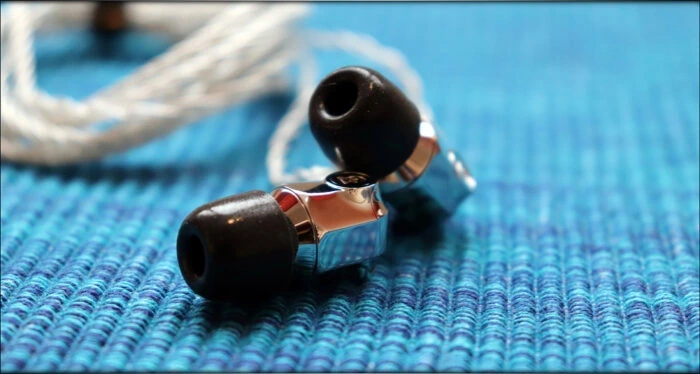
They tend to sit well in your ears after you find their sweet spot, and you can totally walk or run while wearing them, you could use them for live performance, and I found excellent overall comfort when wearing them over-the-ear and straight-down, but the better comfort and sonic performance can be had while wearing them straight-down from my experience.
Comparisons
Campfire Atlas is a true flagship, and it is only fair that I compare it with only the best flagships out there, since by the time you’re considering them, you’re considering other interesting flagships as well. The main IEMs I’m comparing Campfire Atlas with are HIFIMAN RE2000, Dita Answer Truth Edition, Beyerdynamic Xelento. I considered comparing Atlas with IE800 from Sennheiser, but IE800 is quite outdated by this time, and the comfort difference is too high, when you take into account how much more comfortable Atlas is. As always, if you’re curious for comparisons with other IEMs, don’t hesitate to ask.
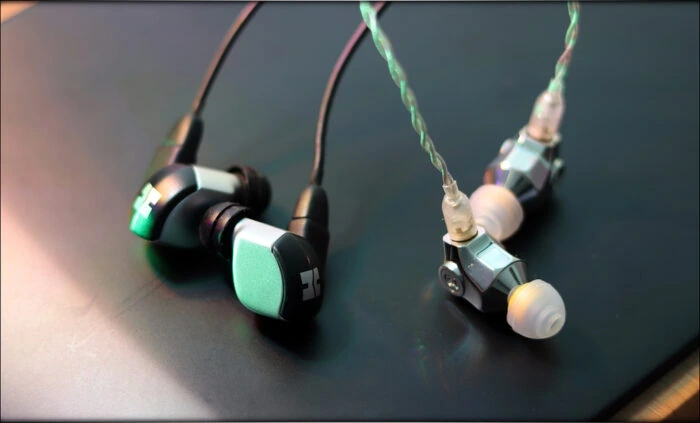
Campfire Atlas vs HIFIMAN RE2000 – Campfire Atlas is quite a different product from HIFIMAN RE2000, which is the current flagship from HIFIMAN, quite the titan of the audiophile industry. Starting with the package, RE2000 comes in a really impressive one, a leather box, with a good selection of tips, although no Final Tips like Atlas. Both IEMs come with detachable cables, and RE2000 relies on the better 2-Pin connection, but with the improved version of MMCX that Atlas has, it doesn’t feel like the user would be unhappy with Atlas in terms of cables, especially since there is a wide selection of aftermarket cables available in 2-Pin format, but also in MMCX format, opposed to more exotic connectors like Linum’s T2 premium connectors. The build quality of both IEMs is outstanding, with RE2000 having a more basic overall shape, but not being heavier, but being made to be worn over-the-ear, where Atlas is mainly created to be worn straight-down. Overall, both fit well, but with Spinfit tips, I had better fit with RE2000 in terms of Driver Flex, where RE2000 doesn’t have any. With Atlas, using foam tips removed the driver flex, and it works well for the overall sound, but foam tips need periodic replacements. In terms of comfort, I got excellent results with both, and both are really well-made, but some will prefer Atlas’s silvery surface or RE2000’s golden surface. This being said, there is a Silver RE2000 out there, which has a silver finish, although it is a matte finish, where Atlas has a glossy silvery finish. When it comes to their sound, RE2000 and Atlas are quite different, with Atlas being the considerably more V-shaped IEM, and with a more organic sound, while RE2000 is much much more neutral and even, has less bass amounts, but with a tighter and quicker bass, has a more analytic sound, more focused on detail retrieval, and has a cleaner overall presentation, with less colouring, while Atlas has a more colored sound, with a more dynamic and explosive presentation, with considerably more sub-bass and bass, but with a larger dip in the lower midrange, with a more prominent treble peak, although RE2000 also has a similar treble peak, which helps it with its detail revealing abilities. The soundstage feels a bit larger in size with RE2000, and RE2000 has the same imaging and layering abilities as Atlas, but with the considerably stronger bass of Atlas, this is less of their focus, compared to the more neutral RE2000. Now, both flagships have very comparable levels of details and resolution, and picking between them should be quite easy, based on whether you want a stronger bass, and a more colored sound, if you like having more impact, and if you like a more natural speed, and a less analytic sound, RE2000 being the IEM with a more analytic edge, a less powerful bass, but with a quicker overall speed, where Atlas is the more fun tuned one, with a more organic overall sound, with more of a treble peak and sparkle in the 7-10kHz area, feeling more tuned to be fun rather than being absolutely precise.
Campfire Atlas vs Beyerdynamic Xelento – Beyerdynamic Xelento is another really interesting entry, since it has a similar bass amount, when compared to CA Atlas, but there’s much more to sound than bass. Starting with the package, Xelento clearly comes in the larger package, but there are a few catches, for example, the fact that although Xelento comes with two cables, one has a remote, and one doesn’t, but neither isn’t balanced, both being single-ended. The tips are proprietary for Xelento, so you won’t be able to use normal Spinfit or Comply tips, or Final E-Tips, like you can with Atlas. The shape allows for a much shallower fit for Xelento, which is supposed to get a really shallow fit, where Atlas has a more medium fit. Xelento can be worn both over-the-ear and straight-down, but I found better comfort wearing Xelento over-the-ear, while with Atlas, the comfort is better while wearing them straight-down. The overall comfort is great with both IEMs, but they feel fairly different while being worn. Both Xelento and Atlas have detachable cables, and both cables are based on the MMCX connector, but Campfire designed an improved version of MMCX for Atlas, while Xelento relies on a more classical MMCX connector. Both Xelento and Atlas have some driver flex in certain situations, and both are similar in terms of how sensitive to hiss they are. The most important aspect, the sound, is quite different between the two. Although Atlas is plenty smooth in the bass, and the midrange is not very analytic, Xelento is the most smooth flagship I heard to date, as Xelento has a really interesting approach to sound, with a really thick bass, strong sub-bass, strong bass, strong upper bass, strong lower midrange, and slowly going lower and lower from there. This means that Xelento has a thick and warm sound, but with a really satisfying presentation, all while being really really smooth, without much treble impact or presence, being one of the most warm and smooth IEMs I heard, with the least treble quantity and impact, especially when compared with Atlas, which has a much more bright treble, more treble presence, more impact, presents guitar solos more juicy, has a more balanced overall sound. I would easily recommend Xelento more to someone who wants the absolutely most smooth and soothing sound, while Atlas would be easier to recommend to someone who wants a bass-heavy IEM, yet which has a good treble sparkle, with good treble presence and impact. Overall, Xelento still has its place as a flagship, having a good amount of resolution and detail, refinement, and being easy to recommend for people looking for a smooth, lean, clear, clean, yet friendly and relaxing sound, where Atlas is made for the music lover who likes a satisfying bass, yet prefers to have a more clear treble presentation, more detail, more juice in the guitar solos, more overall treble with their music.
Campfire Atlas vs Dita Answer Truth Edition – Starting with the package, Dita Truth comes in a larger overall package, and has more glamour around its cable, which is designed by Van Den Hull, but the cables of Dita Truth, in exchange, are not detachable, which is quite a pity, considering that they are quite amazing IEMs. The fit and comfort is comparable, although Dita Truth is a larger IEM, with a more round shape, and can be worn only over-the-ear, yet both Dita Truth and CA Atlas are comfortable and easy to wear. The default cable of Dita Answer is a bit more springy. In terms of driver Flex, Dita Truth doesn’t have any, but both Dita Truth and Atlas have some sensitivity to hiss, and both are best used with sources which have a lower output impedance. The sonic signature of the two is quite different, and actually at opposite ends, with Dita Answer being a pretty neutral to bright IEM, with a really clear and analytic sound, excellent detail retrieval ability, and with a really impressive overall tuning, where CA Atlas is a mildly V-shaped Signature IEM, with a really deep and strong bass, with a more natural, and slower bass, with a more recessed upper bass / lower midrange, but with more emphasis in the lower treble / upper midrange, where Dita Truth has most of its treble enhanced. The revealing abilities are better with CA Atlas, with more textures and more detail being revealed by it, but it is important to note that CA Atlas is quite a bit more expensive than Dia Answer, about 50% more expensive to be precise. Now, if you’re looking for a lean and neutral sound, with a bright top end, yet which is fairly musical, and which has excellent revealing abilities, but with an analytic overall tuning, Dita Truth is still really easy to recommend, and people owning it are still in love with it, while if you’re looking for a more thick sound, with considerably more bass, a more visceral overall presentation, with a clearly peak in the treble, around 7-9kHz, with a more V-shaped sound, and which is more tuned for fun, being organic and rich rather than analytic, CA Atlas is quite the performer, being really easy to recommend, and many of the owners being able to say how much they love Atlas.
Recommended Pairings
Since Campfire Atlas is fairly easy to drive, and an iFi xDSD or NextDrive SpectraX can do the job really well, and provide excellent results, those two devices would make a lot of sense for pairing Atlas with, if you’re on a budget. On the other hand, if you’re looking for getting a much better result out of them, and if you’re ready to go for a more premium price tag, pairing CA Atlas with a Mytek Brooklyn DAC+ or an iBasso DX200 would make much more sense. Campfire Atlas is slightly sensitive to hiss from hissy sources, but as I always say, this is not an issue while listening to music, since hiss is many degrees lower in volume than actual music, usually being audible just when music is not playing, so avoiding a source with a high output impedance may be a good idea if you’re trying to avoid hiss.
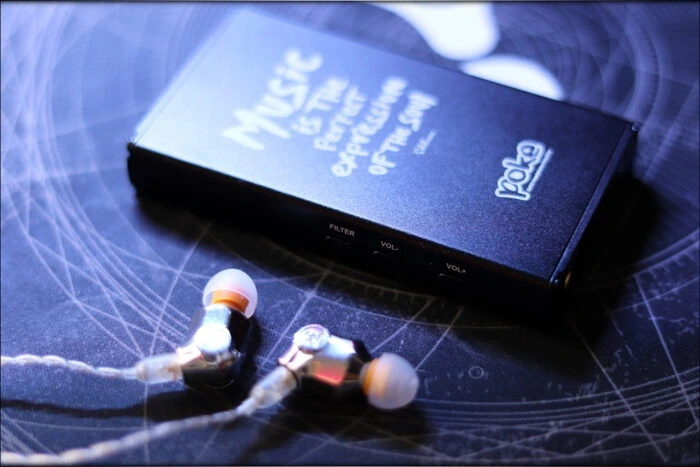
Campfire Atlas + iFi xDSD – I just reviewed iFi xDSD, and it simply stuck with me in terms of how convenient it is to use, since I can take it anywhere with me, and just strap it to my smartphone, and be done for the day. xDSD is really interesting because it is versatile you can also use Bluetooth, and other fancy features if you want to have a simpler setup, yet take advantage of Atlas’s detailed and crispy sound. In terms of sonic pairing, xDSD is fairly neutral by itself, maybe with a slight warm tilt, so you don’t have to worry about it, it won’t color Atlas, but it should be noted that xDSD’s X-Bass and 3D soundstage features might not be very handy with Atlas since Atlas is already pretty V-shaped. I would sometimes use the 3D feature, to tone down the bass, and tone the treble up a bit for Atlas, but more often than not, I kept both settings turned off. Of course, if you’re a really diehard basshead, you can engage x-Bass on xDSD with Atlas, since it has zero distortion, and it will surely give you a new meaning for what bassy means.
Campfire Atlas + iBasso DX200 – iBasso DX200 is what I would call a truly worthy DAP to drive a proper flagship, as it has all the abilities a proper Player should have, but with a lot of extras, including removable and interchangeable AMP modules, each with its own sound and abilities, like the newly released AMP7, and AMP8, and since you can replace the cable of Atlas, having a 4.4mm Balanced AMP module will surely come in handy. DX200 is also smart and can do Streaming, which is more and more important. The detail levels of DX2000 are ultimate in the world of DAPs (Digital Audio Players), DX200 being one of the Prime DAPs that money can buy at the moment of writing this review, and providing an overall technical performance comparable with a good Desktop setup of a similar price. The battery life will hold you long enough, and DX200 also has iBasso’s amazing support, currently having its firmware updated to Android 8.1, with future updates still planned and even more new interesting features coming for it. The sonic pairing is quite interesting, as DX2000 is one of the most revealing DAPs out there, so it really makes Atlas shine, giving them a better overall speed than most other solutions, since it is also fairly quick, and with AMP1, it tends to cut a bit of Atlas’s treble peak, and quicken the sound, resulting in a more balanced overall experience, being one of my personal favorite DAPs to pair with Atlas.
Campfire Atlas + Hiby R6 – Hiby R6 is a middle child in the world of DAPs, being priced fairly high, as an upper midrange DAP, and having a lot of competition, yet not necessarily providing the best technical sonic performance, but winning a lot of ground in terms of actual performance from its RAM and CPU, acting more like a really smart DAP, that is really easy to use for Streaming and other online services, having the quickest CPU of this moment, and the Hiby Music app, which I also use on my smartphone, so not a bad choice at all. With R6, Atlas tends to catch a bit of hiss, since R6 has a fairly high output impedance, but using something like iFi iEMatch surely is an easy fix for the issue, and I can’t hear the hiss while listening to music anyways. The sonic pairing is quite good, R6 being mostly neutral, and providing a really good partner for the “fun tuned” Atlas. R6 also can place Atlas in a highlight in terms of detail retrieval and overall technical ability, and while it doesn’t get quite as good as DX200 technically, it is simpler, if you’re looking for a simpler device.
Value and Conclusion
Campfire Atlas has been a truly interesting IEM to review and listen, and it I am most certain that it will become a favorite for many other music lovers.
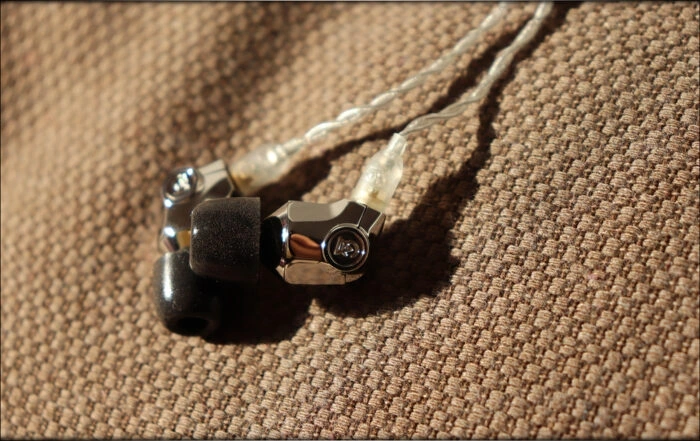
Starting with the package, it comes in a small and boutique-like little box, that is cute to hold, and should not raise any suspicions with your favorite carrier. As small as it is, the package has enough space to include some really handy accessories, like the extra premium carrying case, the large collection of tips, and the excellent Silver Cable. This means that Atlas reaches the golden standard for a package, and it has everything a flagship should have, including a premium and useful carrying case, a premium cable, and everything else you may expect from a high-end product.
The build quality is just as solid, and you’re looking at an IEM made from one piece, one that will hold you forever, one that is sleek to watch, comfortable to wear, and one that is made to last, worked finely in every aspect, including the MMCX connectors which are slightly redesigned to last you for years. In fact, it would also reach a golden standard for build quality, fit, and comfort, if it didn’t have a bit of driver flex, but that issue can be alleviated by using foam tips, which I wholeheartedly recommend with Atlas.

The sound is as impressive as the IEM design and the price tag is, a dynamic, explosive sound, well extended at both sides, a V-Shape with a really strong sub-bass, but which manages to keep it all under control, and which manages to deliver the kick it should. The midrange is one of the most juicy you can find, especially if you love to listen to guitar solos, and female vocals, having a lot of emotion, detail, and presenting everything clearly, and full, with a unique richness. The treble comes to complete and compete with the strong bass, to offer a good balance between the lows and the highs, offering the balance Atlas requires to be fun and enjoyable, offering the sparkle that will balance the entire sound.
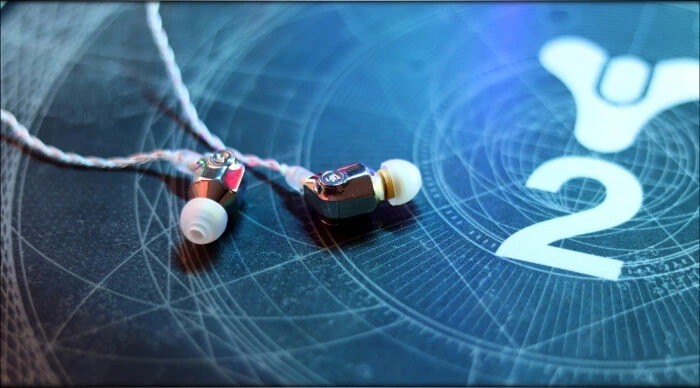
You can pair it with almost any decent portable, but it scales up with your source, so if you can afford a higher-end source, you will be getting one of the best sounds you could out of Atlas, and you can also get the advantage of a more refined overall experience. You could take Atlas with you on a jogging session, or to walk and to explore your surroundings, including taking it out in the Winter or in full blown summer, without having to worry.
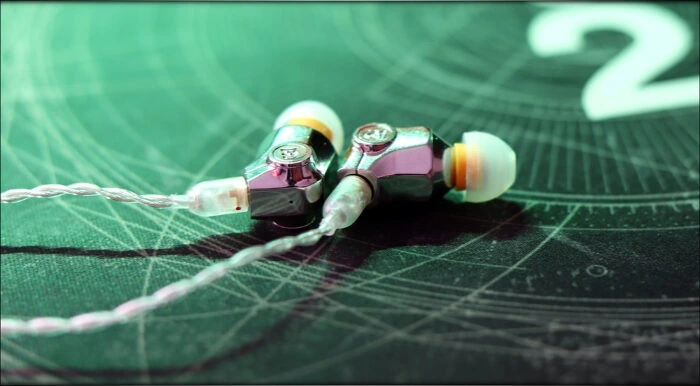
At the end of this review, if you’re looking for a V-Shaped Signature Flagship, with a very strong Sub-Bass and Bass, with a really clear overall tuning, with a juicy and detailed, yet musical midrange, and with a sparkly treble that will counterbalance the strong bass, with a fun and playful, dynamic yet detailed signature, you should totally check out Campfire Atlas, one that makes history in music.
Product Link
You can get Campfire Atlas from www.amazon.com here: https://www.amazon.com/Campfire-Audio-Earphone-CAM-5225-products%E3%80%91%E3%80%90Ships/dp/B07DNHLHSZ/
--- Please remember to stay safe, and always have fun while listening to music!---
- If you have a dime to spare, please donate, and help us! It would make the day brighter for me and my wife-
Full Playlist used for this review
We listened to more songs than those named in this playlist, but those are excellent for identifying a sonic signature. I recommend trying most of the songs from this playlist, especially if you’re searching for new music! The playlists are different for Spotify, Tidal and Youtube, and based on the songs I enjoy and are available on each!
https://www.youtube.com/playlist?list=PL_cjBXGmwSHSdGcwuc_bKbBDGHL4QvYBu
https://open.spotify.com/playlist/5J3oloz8Riy9LxEGenOjQ0?si=979ba4f082414be7
https://tidal.com/browse/playlist/330fd544-8e5b-4839-bd35-676b2edbb3d5
--- Contact Us ---






Excellent review! Love the comparisons, and I hope you keep going strong in 2022!!